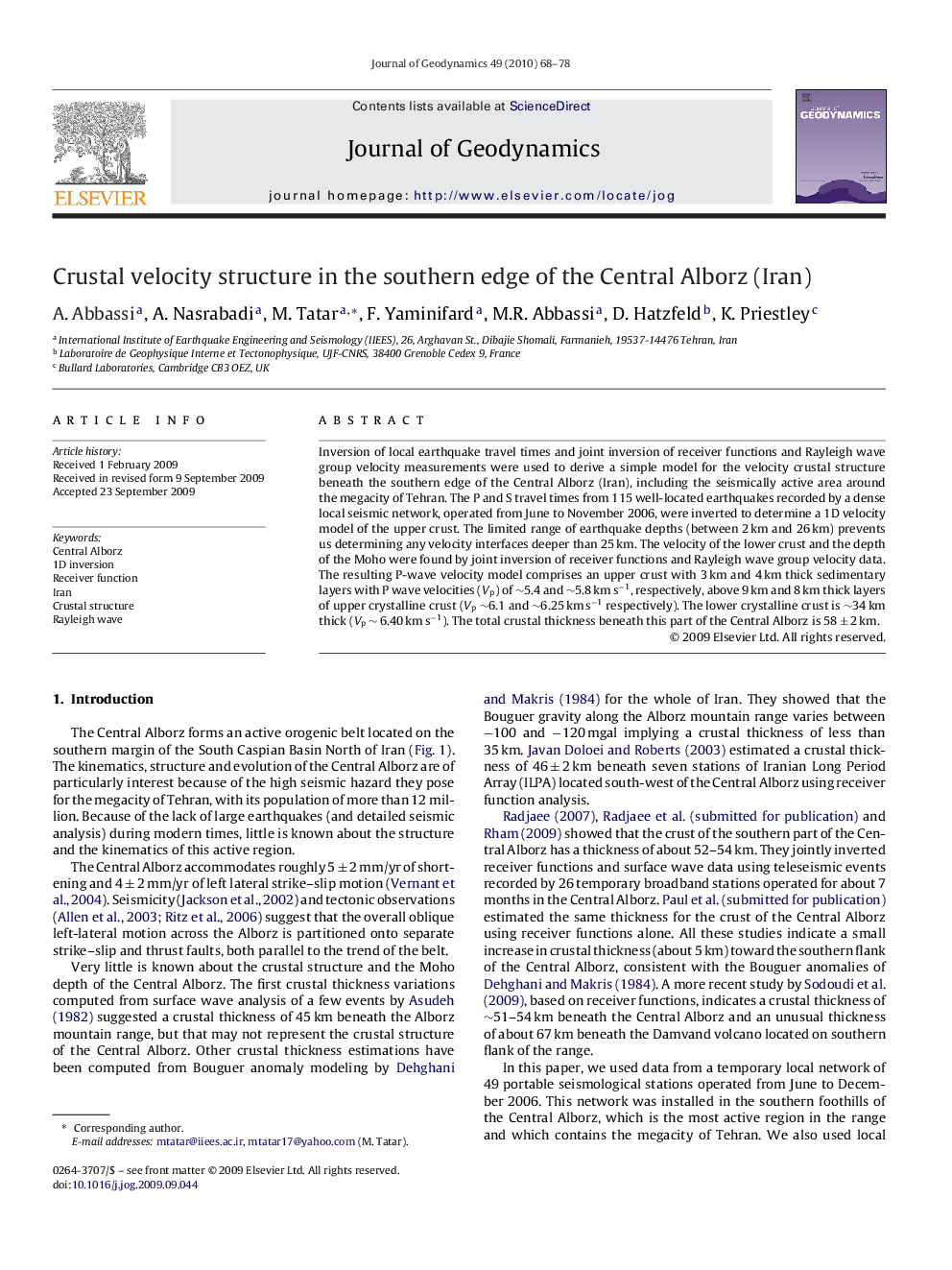| Article ID | Journal | Published Year | Pages | File Type |
|---|---|---|---|---|
| 4688546 | Journal of Geodynamics | 2010 | 11 Pages |
Inversion of local earthquake travel times and joint inversion of receiver functions and Rayleigh wave group velocity measurements were used to derive a simple model for the velocity crustal structure beneath the southern edge of the Central Alborz (Iran), including the seismically active area around the megacity of Tehran. The P and S travel times from 115 well-located earthquakes recorded by a dense local seismic network, operated from June to November 2006, were inverted to determine a 1D velocity model of the upper crust. The limited range of earthquake depths (between 2 km and 26 km) prevents us determining any velocity interfaces deeper than 25 km. The velocity of the lower crust and the depth of the Moho were found by joint inversion of receiver functions and Rayleigh wave group velocity data. The resulting P-wave velocity model comprises an upper crust with 3 km and 4 km thick sedimentary layers with P wave velocities (Vp) of ∼5.4 and ∼5.8 km s−1, respectively, above 9 km and 8 km thick layers of upper crystalline crust (Vp ∼6.1 and ∼6.25 km s−1 respectively). The lower crystalline crust is ∼34 km thick (Vp ∼ 6.40 km s−1). The total crustal thickness beneath this part of the Central Alborz is 58 ± 2 km.
